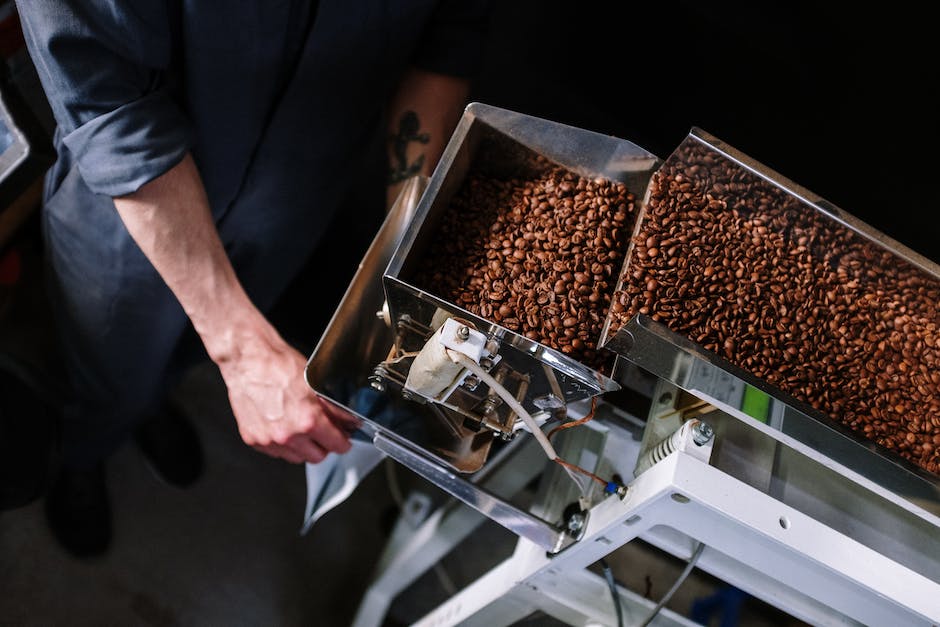-
Table of Contents
Introduction
Coffee bean density is an important factor to consider when roasting coffee. It can affect the roasting time, flavor, and aroma of the coffee. Therefore, it is essential to know how to check coffee bean density before roasting. In this article, we will discuss the methods to check coffee bean density.
Understanding the Importance of Coffee Bean Density
Coffee is one of the most popular beverages in the world, and it is consumed by millions of people every day. However, not all coffee beans are created equal, and the quality of the coffee you drink depends on a variety of factors, including the density of the coffee beans. In this article, we will discuss the importance of coffee bean density and how to check it.
Density is a measure of how tightly packed the molecules in a substance are. In the case of coffee beans, density is an important factor because it affects the flavor, aroma, and strength of the coffee. High-density beans are generally considered to be of higher quality because they have a more complex flavor profile and a stronger aroma. Low-density beans, on the other hand, are often considered to be of lower quality because they have a weaker flavor and aroma.
There are several ways to check the density of coffee beans. One of the most common methods is to use a density meter, which is a device that measures the density of a substance by measuring its buoyancy in a liquid. To use a density meter, you will need to grind the coffee beans into a fine powder and then mix the powder with a liquid that has a known density, such as water or ethanol. The density meter will then measure the buoyancy of the coffee powder in the liquid and calculate its density.
Another way to check the density of coffee beans is to use a simple visual inspection. High-density beans are generally smaller and denser than low-density beans, and they will often have a more uniform color and shape. Low-density beans, on the other hand, are often larger and less dense, and they may have a more irregular shape and color.
You can also check the density of coffee beans by using a simple float test. To do this, you will need to fill a container with water and drop the coffee beans into the water. High-density beans will sink to the bottom of the container, while low-density beans will float on the surface. This test is not as accurate as using a density meter, but it can give you a rough idea of the density of your coffee beans.
In addition to checking the density of your coffee beans, there are several other factors that can affect the quality of your coffee. These include the roast level, the brewing method, and the freshness of the beans. To get the best possible cup of coffee, it is important to pay attention to all of these factors and to experiment with different brewing methods and roast levels until you find the perfect combination for your taste.
In conclusion, the density of coffee beans is an important factor that can affect the flavor, aroma, and strength of your coffee. There are several ways to check the density of your coffee beans, including using a density meter, a visual inspection, or a float test. By paying attention to the density of your coffee beans and experimenting with different brewing methods and roast levels, you can enjoy a delicious cup of coffee that is tailored to your taste.
Tools Needed to Measure Coffee Bean Density
Coffee is one of the most popular beverages in the world, and it is consumed by millions of people every day. However, not all coffee beans are created equal, and the quality of the coffee you drink depends on a variety of factors, including the density of the coffee beans. Coffee bean density is an important factor that affects the flavor, aroma, and strength of the coffee. In this article, we will discuss how to check coffee bean density and the tools needed to measure it.
The density of coffee beans is determined by the weight of the beans per unit volume. The denser the beans, the heavier they are per unit volume. The density of coffee beans is affected by a variety of factors, including the altitude at which the beans are grown, the type of soil in which they are grown, and the processing method used to prepare the beans for roasting.
To check the density of coffee beans, you will need a few tools. The first tool you will need is a scale. A digital scale is recommended because it provides accurate measurements. You will also need a measuring cup or a graduated cylinder to measure the volume of the beans. Finally, you will need a calculator to calculate the density of the beans.
To measure the density of coffee beans, you will need to follow a few simple steps. First, weigh a sample of coffee beans using the digital scale. Next, measure the volume of the beans using the measuring cup or graduated cylinder. To do this, fill the measuring cup or graduated cylinder with water and record the volume. Then, add the coffee beans to the water and record the new volume. The difference between the two volumes is the volume of the coffee beans.
To calculate the density of the coffee beans, divide the weight of the beans by the volume of the beans. For example, if the weight of the beans is 100 grams and the volume of the beans is 50 milliliters, the density of the beans is 2 grams per milliliter.
It is important to note that the density of coffee beans can vary depending on the type of bean and the roasting method used. For example, Arabica beans are generally denser than Robusta beans, and dark roasted beans are generally less dense than light roasted beans. Therefore, it is important to take these factors into account when measuring the density of coffee beans.
In conclusion, checking the density of coffee beans is an important step in ensuring the quality of your coffee. By using a digital scale, a measuring cup or graduated cylinder, and a calculator, you can easily measure the density of your coffee beans. Remember to take into account the type of bean and the roasting method used when measuring the density of your coffee beans. With these tools and tips, you can enjoy a delicious cup of coffee every time.
Step-by-Step Guide on How to Check Coffee Bean Density
Coffee is one of the most popular beverages in the world, and it is consumed by millions of people every day. However, not all coffee beans are created equal, and the density of the beans can have a significant impact on the quality of the coffee. In this article, we will provide a step-by-step guide on how to check coffee bean density.
Step 1: Gather the Necessary Equipment
To check the density of coffee beans, you will need a few pieces of equipment. These include a scale, a graduated cylinder, and a container to hold the beans. You will also need a calculator to perform some simple calculations.
Step 2: Weigh the Beans
The first step in checking the density of coffee beans is to weigh them. Place the container on the scale and tare it to zero. Then, add a specific amount of beans to the container. The amount of beans you use will depend on the size of the graduated cylinder you are using. For example, if you are using a 100 ml graduated cylinder, you will need to use 60 grams of beans.
Step 3: Measure the Volume
Once you have weighed the beans, you will need to measure their volume. To do this, pour the beans into the graduated cylinder and record the volume. Make sure to tap the cylinder gently to settle the beans and remove any air pockets.
Step 4: Calculate the Density
To calculate the density of the coffee beans, you will need to divide the weight of the beans by their volume. For example, if you used 60 grams of beans and the volume was 50 ml, the density would be 1.2 g/ml.
Step 5: Repeat the Process
To get an accurate reading of the density of the coffee beans, you will need to repeat the process several times. This will help to ensure that your results are consistent and reliable.
Step 6: Interpret the Results
Once you have calculated the density of the coffee beans, you can interpret the results. Generally, denser beans are considered to be of higher quality. This is because denser beans tend to have a more complex flavor profile and a richer aroma.
However, it is important to note that density is not the only factor that determines the quality of coffee beans. Other factors, such as the altitude at which the beans were grown, the type of soil they were grown in, and the processing method used, can also have a significant impact on the quality of the coffee.
Conclusion
Checking the density of coffee beans is a simple process that can be done with just a few pieces of equipment. By following the steps outlined in this article, you can determine the density of your coffee beans and use this information to make informed decisions about the quality of your coffee. Remember, while density is an important factor, it is not the only factor that determines the quality of coffee beans. To truly appreciate the complexity and richness of coffee, it is important to consider all of the factors that contribute to its flavor and aroma.
Interpreting the Results of Coffee Bean Density Measurements
Coffee bean density is an important factor in determining the quality of coffee. It is a measure of how tightly packed the beans are, and it can affect the flavor, aroma, and strength of the coffee. Measuring coffee bean density is a simple process that can be done using a few basic tools. However, interpreting the results of these measurements can be a bit more complicated. In this article, we will discuss how to check coffee bean density and how to interpret the results.
To check coffee bean density, you will need a scale, a graduated cylinder, and a sample of coffee beans. First, weigh the sample of coffee beans on the scale. Then, pour the beans into the graduated cylinder and record the volume. Divide the weight of the beans by the volume to get the density. The density of coffee beans is typically measured in grams per milliliter (g/ml).
Once you have measured the density of your coffee beans, you can use this information to determine the quality of the beans. Generally, high-quality coffee beans have a higher density than lower-quality beans. This is because high-quality beans are typically grown at higher altitudes, which results in a denser bean. Additionally, high-quality beans are often hand-picked, which means that only the ripest and most flavorful beans are selected.
However, it is important to note that density is not the only factor that determines the quality of coffee beans. Other factors, such as the origin of the beans, the roasting process, and the brewing method, can also affect the flavor and aroma of the coffee. Therefore, it is important to consider all of these factors when evaluating the quality of coffee beans.
In addition to determining the quality of coffee beans, measuring density can also be useful for roasters and baristas. Roasters can use density measurements to determine the optimal roasting time and temperature for a particular batch of beans. Baristas can use density measurements to ensure that they are using the correct amount of coffee grounds for each cup of coffee. This can help to ensure consistency in the flavor and strength of the coffee.
When interpreting the results of coffee bean density measurements, it is important to keep in mind that there is no one “correct” density for coffee beans. The ideal density will vary depending on the type of coffee and the desired flavor profile. For example, espresso beans typically have a higher density than drip coffee beans, as they need to be finely ground and packed tightly to produce a strong, concentrated shot of espresso.
In general, a density of around 0.7 g/ml is considered to be a good indicator of high-quality coffee beans. However, this is not a hard and fast rule, and other factors should also be considered when evaluating the quality of coffee beans.
In conclusion, measuring coffee bean density is a simple process that can provide valuable information about the quality of coffee beans. However, it is important to remember that density is just one factor that contributes to the flavor and aroma of coffee. When interpreting the results of density measurements, it is important to consider other factors such as origin, roasting, and brewing method. By taking all of these factors into account, you can ensure that you are using the best possible coffee beans to produce a delicious cup of coffee.
Tips for Maintaining Consistent Coffee Bean Density
Coffee is one of the most popular beverages in the world, and it is consumed by millions of people every day. However, not all coffee is created equal, and the quality of the coffee depends on various factors, including the density of the coffee beans. The density of coffee beans is an essential factor that affects the flavor, aroma, and strength of the coffee. Therefore, it is crucial to maintain consistent coffee bean density to ensure that you get the best possible cup of coffee every time. In this article, we will discuss how to check coffee bean density and provide some tips for maintaining consistent coffee bean density.
Checking Coffee Bean Density
The density of coffee beans can be checked using a simple method called the water displacement method. To check the density of coffee beans, you will need a container, water, and a scale. Here are the steps to follow:
Step 1: Fill the container with water and place it on the scale.
Step 2: Note the weight of the water in the container.
Step 3: Add a handful of coffee beans to the container and note the new weight.
Step 4: Subtract the weight of the water from the weight of the water and coffee beans to get the weight of the coffee beans.
Step 5: Divide the weight of the coffee beans by the volume of the container to get the density of the coffee beans.
Maintaining Consistent Coffee Bean Density
Maintaining consistent coffee bean density is essential to ensure that you get the best possible cup of coffee every time. Here are some tips for maintaining consistent coffee bean density:
1. Store Coffee Beans Properly
Storing coffee beans properly is essential to maintain their density. Coffee beans should be stored in an airtight container in a cool, dry place away from sunlight. Exposure to air, moisture, and sunlight can cause coffee beans to lose their density and flavor.
2. Use the Right Grind Size
Using the right grind size is essential to maintain consistent coffee bean density. The grind size should be adjusted based on the brewing method used. For example, a coarser grind is suitable for a French press, while a finer grind is suitable for an espresso machine.
3. Use a Scale
Using a scale is essential to maintain consistent coffee bean density. Measuring the amount of coffee beans used for each cup of coffee ensures that the coffee beans’ density remains consistent.
4. Use Fresh Coffee Beans
Using fresh coffee beans is essential to maintain consistent coffee bean density. Coffee beans lose their density and flavor over time, so it is essential to use fresh coffee beans for the best possible cup of coffee.
5. Clean Coffee Equipment Regularly
Cleaning coffee equipment regularly is essential to maintain consistent coffee bean density. Coffee equipment that is not cleaned regularly can affect the flavor and density of the coffee beans.
Conclusion
Maintaining consistent coffee bean density is essential to ensure that you get the best possible cup of coffee every time. Checking the density of coffee beans using the water displacement method is a simple and effective way to ensure that the coffee beans’ density remains consistent. Storing coffee beans properly, using the right grind size, using a scale, using fresh coffee beans, and cleaning coffee equipment regularly are some tips for maintaining consistent coffee bean density. By following these tips, you can enjoy a delicious cup of coffee every time.
Conclusion
Conclusion: Checking coffee bean density is an important step in ensuring the quality of coffee. It can be done using a simple method of weighing a specific volume of beans and calculating the density. This information can help in determining the roast level and brewing parameters for the coffee. By regularly checking the density, coffee professionals can maintain consistency in their product and provide a better experience for their customers.





